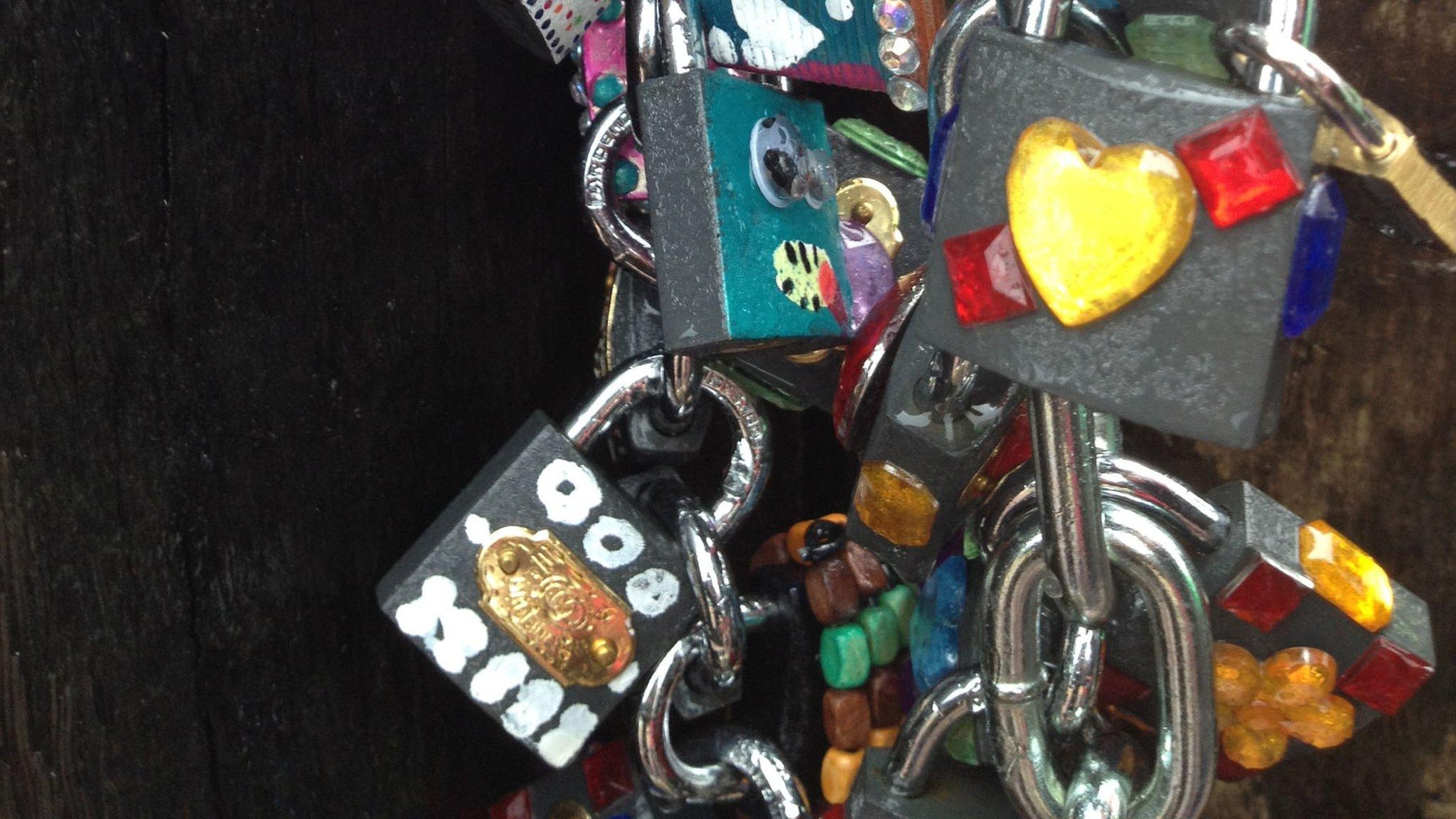Are love locks on bridges romantic or a menace?
- Published

Some bridges in Paris, like the Pont des Arts, have thousands of love locks
Critics say beautiful bridges are being blighted by an epidemic of ugly padlocks "spreading like fungus". But is the growing trend for love locks really a thoughtless act of vandalism, or just a harmless expression of love?
It seemed romantic when Carolyn Barnabo and Clive Roberts attached a padlock to the Pont des Arts and symbolically threw the key into the Seine.
Five years later they are married and their love is still strong, but Carolyn's fondness for love locks certainly isn't.
"It's just out of control and I feel so bad that we contributed to it," says Carolyn, who lives in Suffolk.
"This beautiful bridge is wrecked."
There were just a few love locks on the bridge when she attached her cute cow padlock - engraved with the couple's initials - and posted photos on her blog, external.

Carolyn Barnabo attached a love lock in 2009
Now there are thousands on this bridge and others in Paris, where Carolyn has a second home.
Carolyn says she "could weep with regret and guilt and despair that I've contributed to this hideous sight".
Love locks are so despised by some people that two friends living in Paris - Lisa Taylor Huff and Lisa Anselmo - started a campaign called No Love Locks, external in January.
"The delicate Pont des Arts has become a freakish glut of indistinguishable metal lumps, and worse, is now in mortal danger," Lisa Anselmo wrote, external.
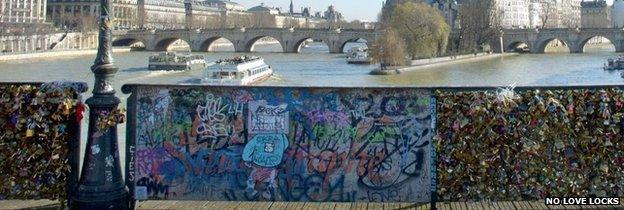
Panels of bridges sometimes need to be removed
They say the City of Love has turned into the City of Locks, and have counted at least eight bridges over the Seine and three over the Canal Saint Martin where padlocks have spread "like fungus".
"It defaces and damages historic structures, and this cannot be ignored," says Lisa Anselmo.
"Some of the bridges involved across Europe are hundreds of years old.
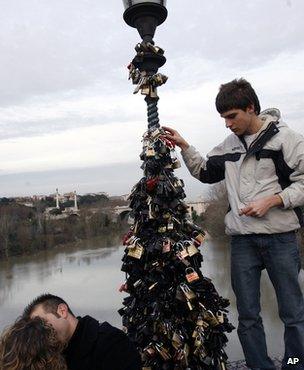
Fines were introduced in Rome in 2007
"This trend imposes itself on the affected cities, and ironically, in the city most affected - Paris - the locals think a lock as a symbol of love is barbaric."
There are various theories about the origins of the trend but some attribute it to the 2006 book Ho Voglia Di Te (I Want You) by Italian author Federico Moccia.
In 2007 the mayor of Rome introduced fines, external for anyone leaving a padlock on a lamp-post on the Ponte Milvio, over the Tiber river.
The unbreakable bond of the padlock supposedly symbolises the everlasting bond between two people in love - but many padlocks are unceremoniously chopped off by local authorities.
Sometimes, complete panels of bridges smothered under the weight of love locks are removed.
Described as an "epidemic" by the No Love Locks campaign, they are spreading around the world.
Businesses cash in on the trend by offering engraved padlocks in heart shapes - with one website suggesting locations to attach them in Amsterdam, Chicago, New York, Prague, Rome, Sydney and the UK.
East Midlands MEP Emma McClarkin tweeted, external a photo of love locks on a bridge in Derbyshire with the message: "Eat your heart out Paris! Whatever you can do #Bakewell can do. #LoveLocks"

Love locks have made it to the East Midlands
The appearance of love locks on Wilford Suspension Bridge, over the River Trent in Nottinghamshire, divided opinion when a photo was posted on BBC Radio Nottingham's Facebook page, external.
Noting the name of a lock brand next to lovers' initials, Rachel Robin joked: "Why do all these couples seem to be involved in threesomes with someone called Chubb?!"
Severn Trent, which owns the bridge, said it wouldn't encourage people to cover the bridge in padlocks, like in Paris, but would leave them as long as they don't cause problems.
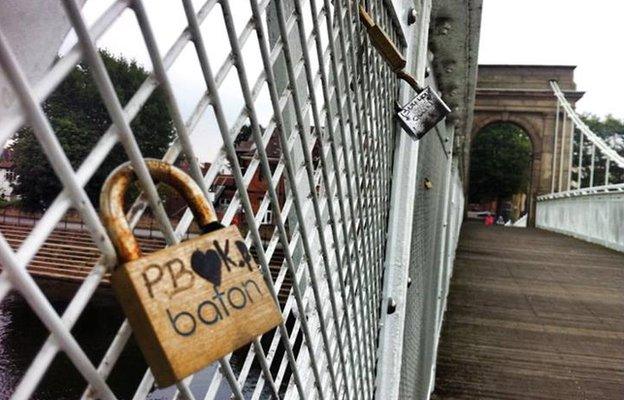
Love locks on Wilford Suspension Bridge have divided opinion
Love locks are no longer restricted to bridges - more than 30 have appeared on the summit of the Eiffel Tower and some have appeared on fences in London.
And they are not restricted to big cities or tourist destinations - four have already appeared on St Botolph's Bridge in Boston, Lincolnshire, which only opened in February.
One woman passing told BBC Radio Lincolnshire: "I would say there are probably better places to put them for romance, Paris being one of them.
"I'm not sure Boston would be the romance centre of the UK."
Lincolnshire County Council says it's not a problem at the moment.
"We were a little surprised when we heard about the locks, but as long as they don't cause any damage to the bridge we're happy to leave them there," principal structures engineer Richard Waters says.
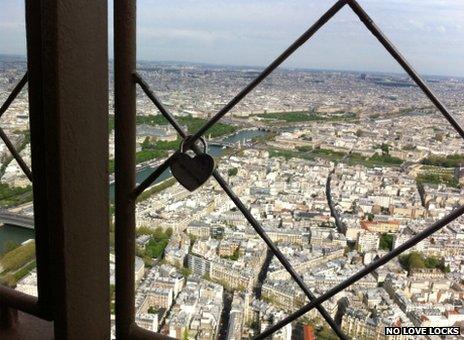
More than 30 love locks have appeared on the summit of the Eiffel Tower
Lisa Anselmo says: "If a city wants to designate and engineer a space uniquely for love locks, while restricting the practice on non-designated areas, that's not a bad idea if it can be enforced.
"The trick is to find a way for love locks and heritage to co-exist."
If there's one place where love locks would arguably be in keeping with heritage then it's Wolverhampton and the surrounding areas - once the lock making capital of the world.
But Wolverhampton City Council isn't aware of lovebirds placing padlocks on any of its bridges yet - not even near the former Chubb lock factory.
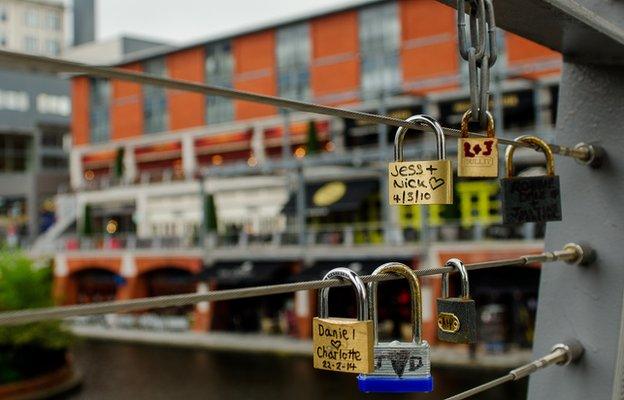
Love locks have reached the Mailbox in Birmingham
Despite attaching their own love lock in Paris five years ago, Carolyn and Clive are in two minds about the practice spreading to England.
"I feel torn because with Paris I've seen how it can mushroom into more than we imagined," says Carolyn.
"I would hate to see the bridges in London or Bakewell, or any beautiful bridges in England, get like that.
"I hope it was a nice idea that runs its course globally."
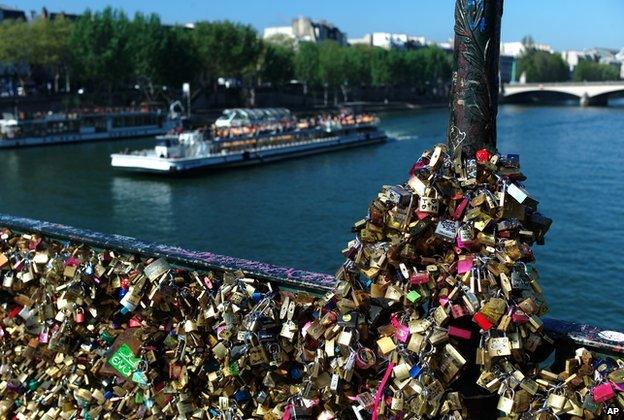
There are multiple layers of love locks on the Pont des Arts
- Published17 April 2014
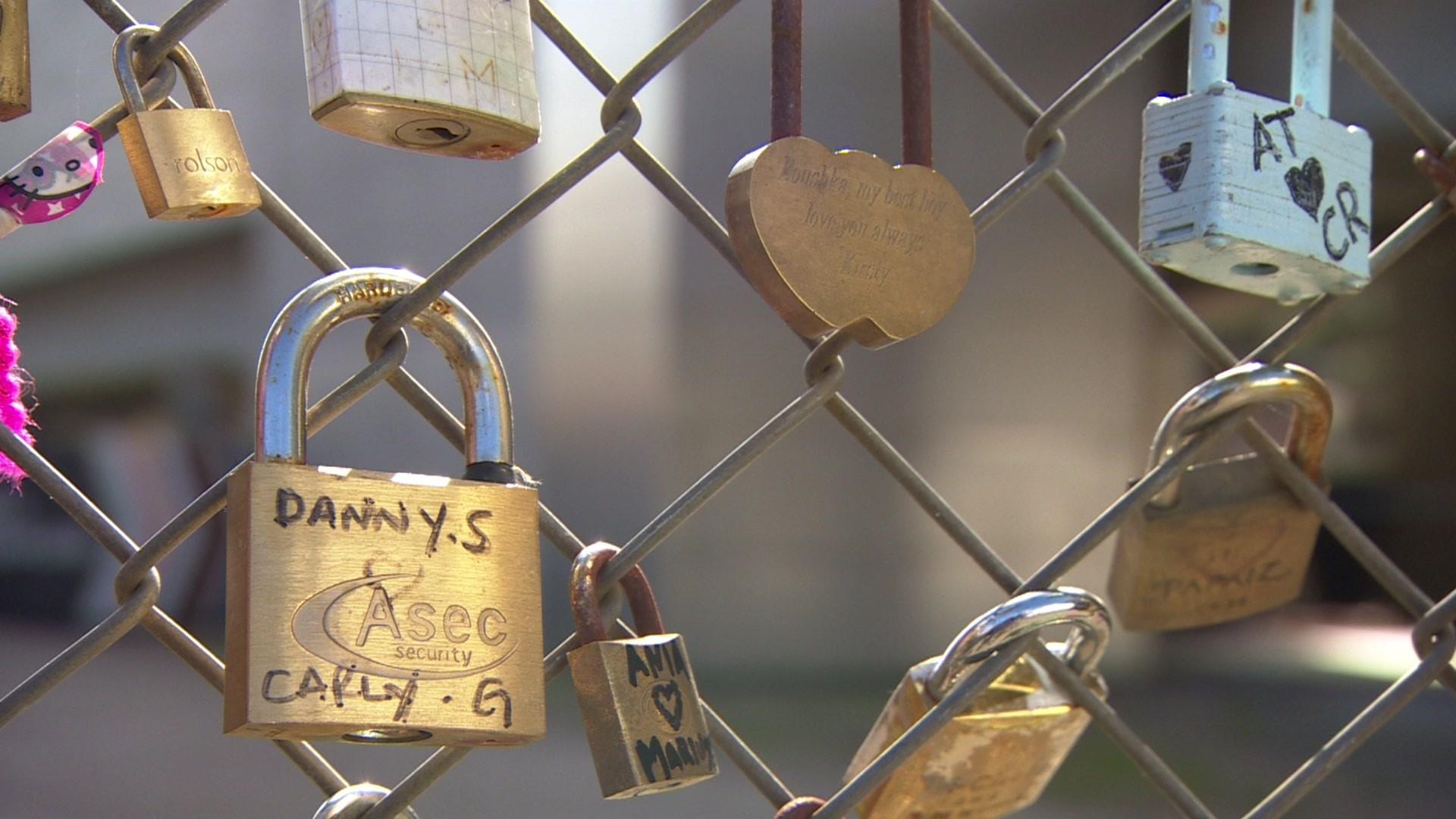
- Published23 February 2014
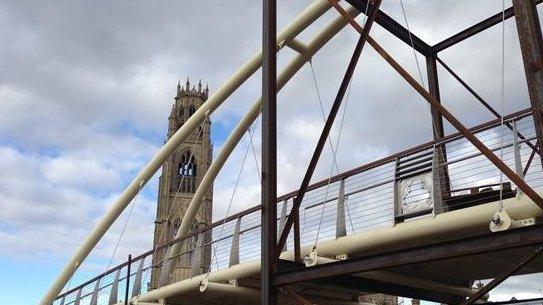
- Published18 July 2013
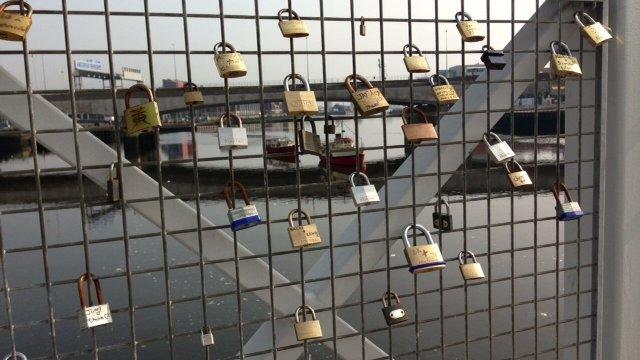
- Published26 September 2012
